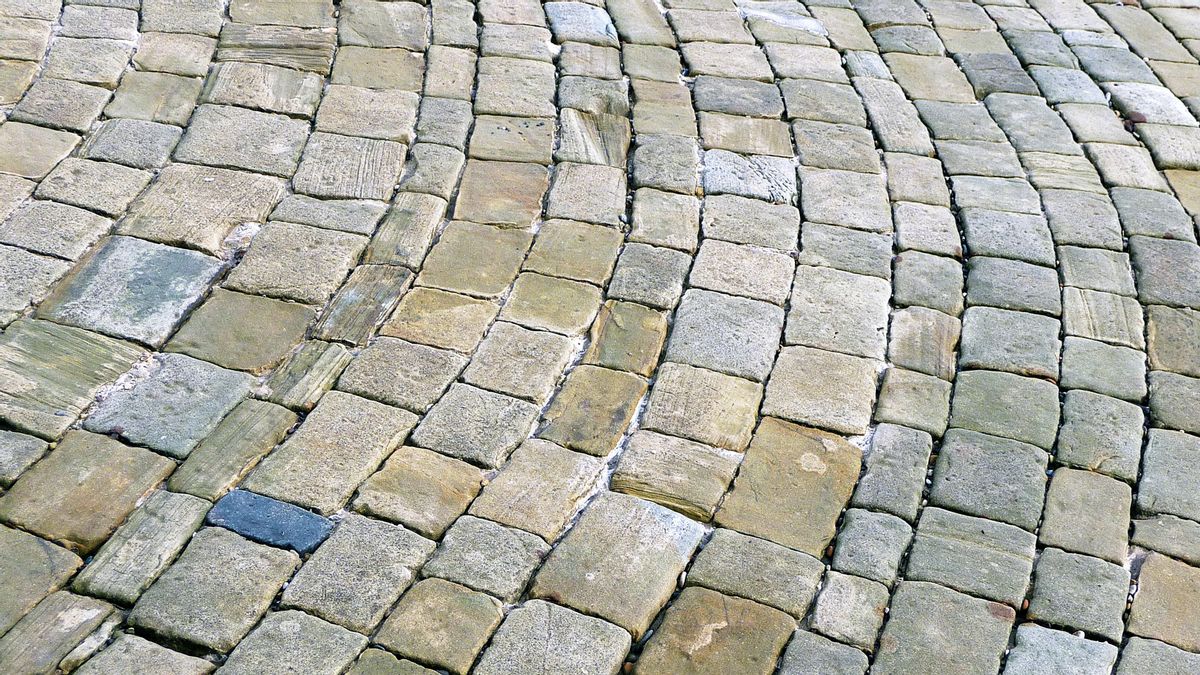JAKARTA - Some time ago, a trial of paving the Formula E circuit at the National Monument (Monas) was over. PT Jakarta Propertindo (Jakpro), as the organizer, ensures that the asphalting does not damage the cobblestone or natural stone that has been stuck with asphalt.
On social media, it was crowded, the cobblestone in Monas was the same as a paving block. So what is the difference between cobblestone and paving blocks?
Roads or floors that use cobblestone have been used from time to time. The trend of using cobblestone in Indonesia has been started since the 90s, according to Solehuddin in his book Creative Unique Natural Stone (2009).
At that time, cobblestones had begun to be installed around the Medan Merdeka Monas Park and other monumental places such as the Elephant Museum and Bank Indonesia Bidakara, Jakarta.
As written by Solehuddin, cobblestone, which includes igneous rock, is formed from freezing lava that comes out of the earth's surface when a volcano erupts. The main characteristic of this rock is that it is hard and solid, so it is widely used for roads and floors.
There are many types of raw rock like this. Andesite and granite are stones that are more special than the others because in addition to being hard and solid, they are also scratch resistant.
Other types are basalt, diorite, gabbro, and temples. All types of rock can be used for floors. In addition, the use of natural stone can also be applied to walls, pillars and ponds.

Meanwhile, paving blocks are a material that is also used for road construction. Quoting Syukur Sebayang et al in Comparison of the Quality of Manual Production Paving Blocks with Masinal Production (2011), the difference with cobblestone which is real rock, paving blocks are made from a mixture of Portland cement or similar hydraulic adhesives, water, and aggregates.
The use of paving blocks, among others, is for pavement of parking lots, sidewalks, streets in housing estates, small alleys and at ports.
Installation of paving blocks can be made of mosaics with a combination of colors according to the aesthetics designed, which can be in the form of logos, writing and parking area boundaries or directions in a residential area. This is because there are many types of paving blocks, ranging in shape from rectangles, pentagons, and hexagons. Besides that, paving blocks also have many color variations.
Paving blocks have various thicknesses and their functions are also different for each thickness level. For those 6 centimeters thick, they are usually used for light traffic loads such as those used for pedestrians.
Meanwhile, 8 centimeters can be used for moderate traffic loads, for example for pick-up, truck, and bus transportation. Finally, 10 centimeters thick is commonly used for super heavy traffic loads and is widely used for industrial areas and ports because of the large number of cranes or other heavy equipment used.

The English, Chinese, Japanese, Arabic, and French versions are automatically generated by the AI. So there may still be inaccuracies in translating, please always see Indonesian as our main language. (system supported by DigitalSiber.id)










